What Are Oyster Mushrooms?
Oyster mushrooms are those which belong to the genus pleurotus. They are considered to be a fungal delicacy. They’re firmer than the common button mushroom with a richer, sweeter flavour.
The pink oyster mushroom (pleurotus djamor) has a strong umami flavour and is often compared to bacon whereas the yellow oyster mushroom (pleurotus citrinopileatus) has a sweeter, nutty flavour
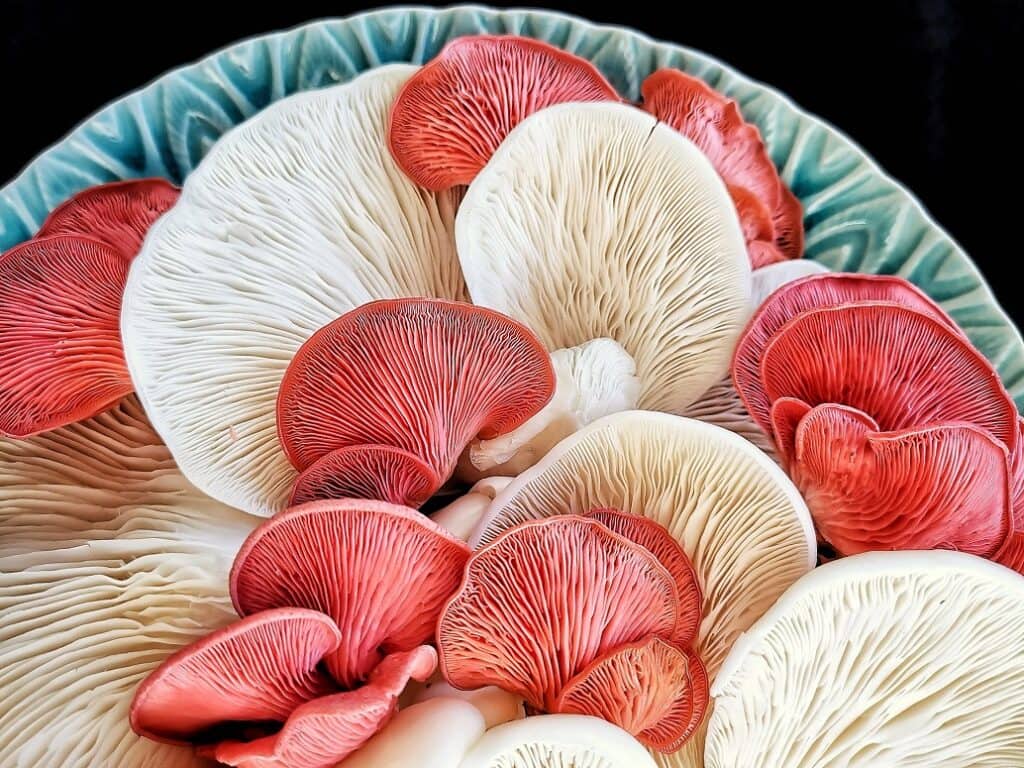
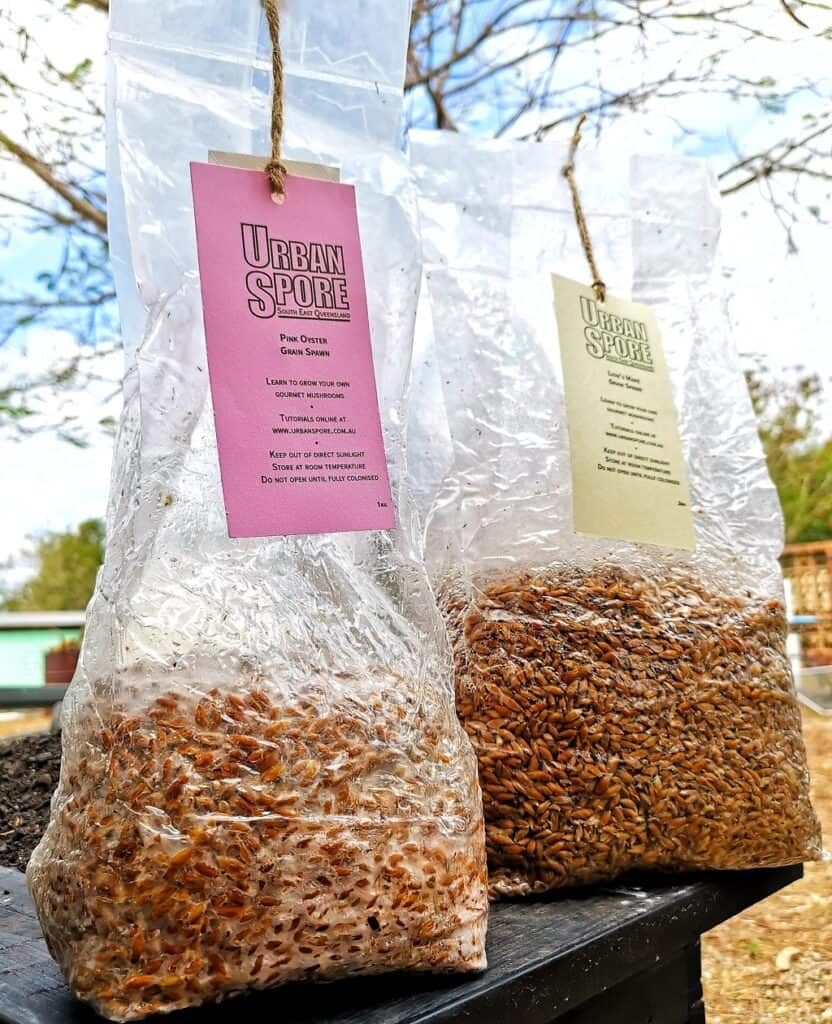
What Is Grain Spawn?
Grain spawn is our little known secret weapon in the world of mushroom cultivation. It’s made from sterilised grains that have been inoculated with a live mycelium culture.
Grain spawn contains a lot of energy for our mycelium to consume. It’s a bit like rocket fuel for mushrooms. Once it’s added to your substrate it takes off like wild fire.
Mother Nature works her magic using spores but in a controlled environment you need to tip the scales in your favour by using clean high-quality grain spawn so you are doing your best to ensure success.
What Is Cold Water Lime Pasteurisation?
Just as it sounds cold water lime pasteurisation uses cold water to pasteurise the substrate. It’s economical, low-impact and an excellent alternative to hot water pasteurisation. It’s my go-to method for pasteurisation when time permits.
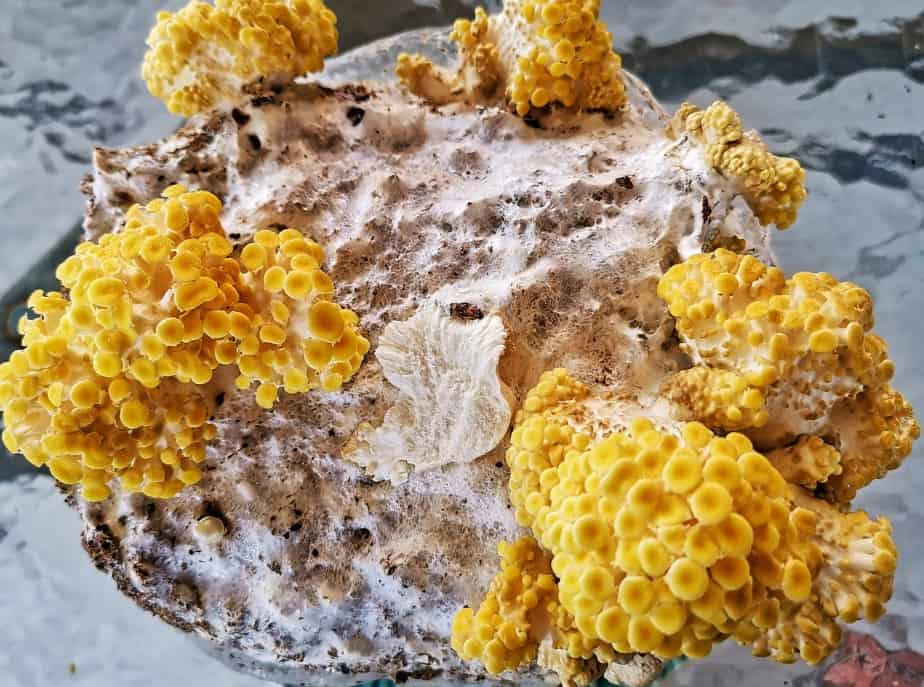
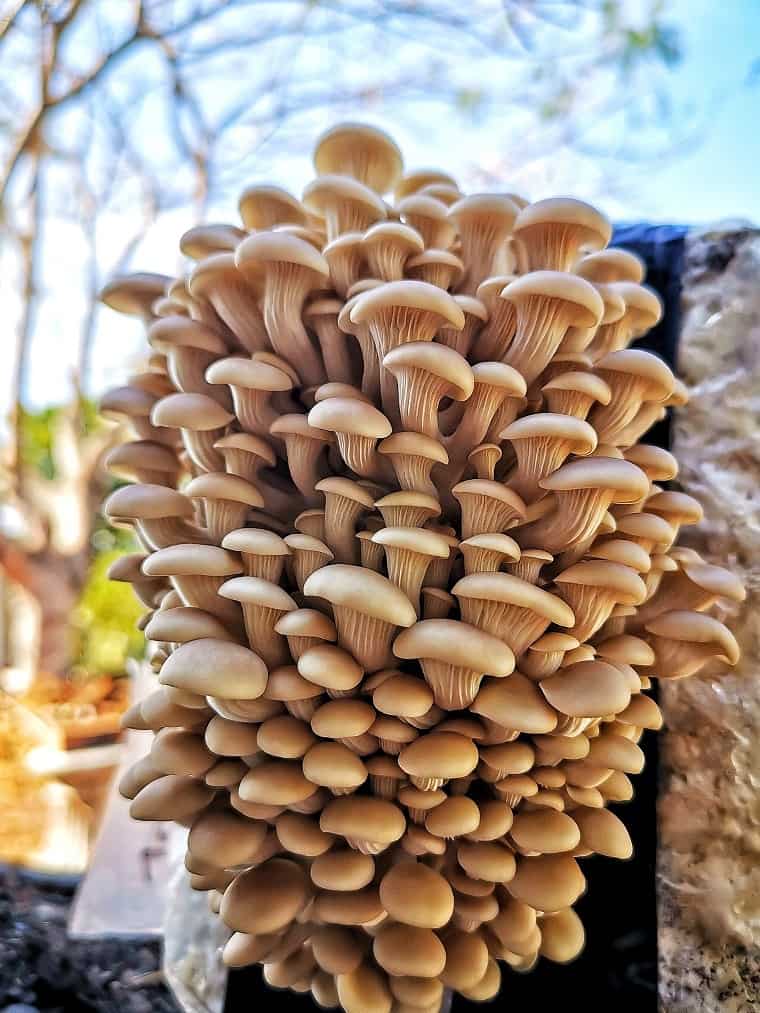
What Is Hot Water Pasteurisation?
Hot water pasteurisation is just one of many methods but it’s a classic, quick and easy to do. In less than 2 hours you can pasteurise and drain your substrate ready for use.
Sounds too good to be true. What’s the catch?
How To Grow Oyster Mushrooms In Buckets
Without a doubt my favourite way to cultivate oyster mushrooms. Perfect for growing all side fruiting oysters.
The mycelium devours the straw or sugar cane mulch while it prepares to launch masses of fresh fungi from each of the numerous holes in the bucket. This design allows for it to be easily harvested and form beautiful clusters.
Either method of cold water lime pasteurisation or hot water pasteurisation can be used for this project. Sugar cane mulch is cheap and accessible where I live but you can use the straw product of your choice taking care to avoid substrates full of viable seed as they may sprout.
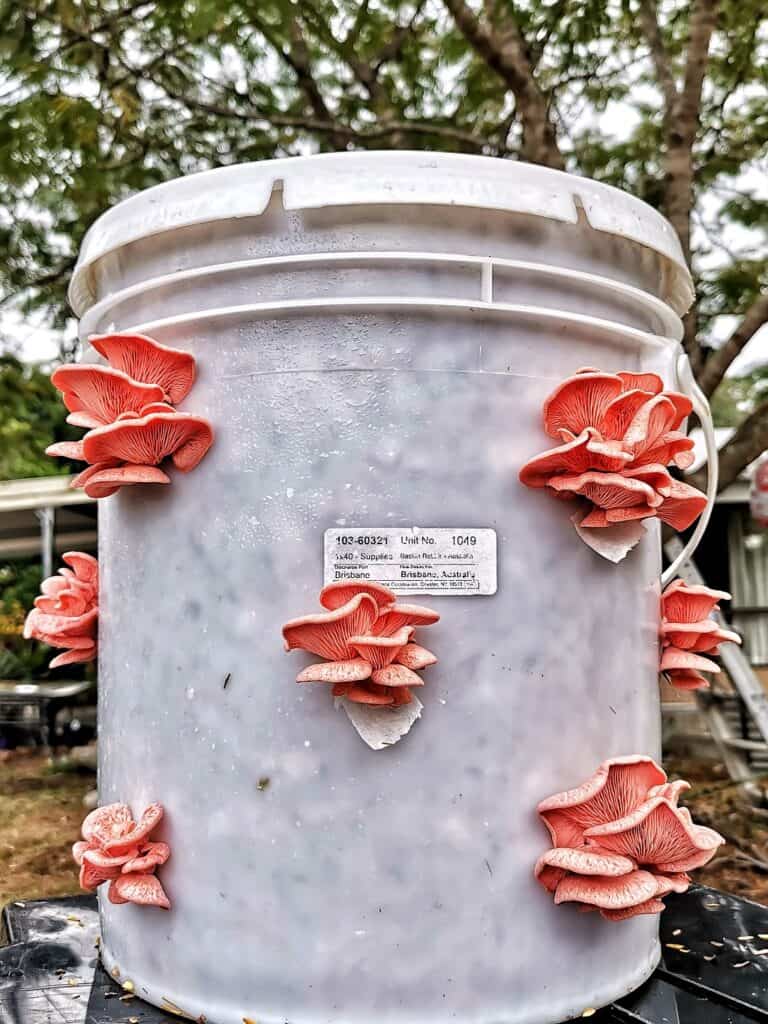

How To Grow Oyster Mushrooms On Paper
Sick and tired on handling itchy, scratchy straw? Yeah, me too. Try growing oyster mushrooms on paper pellets. Super simple and easy to do indoors without making a mess.
Growing oyster mushrooms on paper pellets in zip-loc bags makes for the perfect school holiday project or ongoing bench-top mushroom garden.
How To Grow Oyster Mushrooms On Coffee
Take part in the circular economy by reusing freshly used coffee grounds to grow oyster mushrooms in abundance. Coffee grounds make for a highly nutritious substrate when prepared correctly.


Are You Ready To Start Growing?
Are you ready to get started? Have you got a project in mind? It’s easy once you get started. One step at a time and you’ll be harvesting more mushrooms than you can eat. It’s a pretty nice feeling to turn waste into food and then to be able to share that gift with friends, family and the community.
Starting is a simple as choosing what kind of breathtaking oyster mushroom you’d like to grow.
Do You Want To Take The Next Step?
Are you looking for something more challenging? Have a look at our hardwood mushroom growing guides. Species such as lion’s mane, reishi and turkey tail all thrive on hardwood substrates.
When learning to grow with hardwoods you will develop and understanding of when pasteurisation and sterilisation are needed and also how much grain spawn should be used to inoculate our substrates to minimise the risk of contamination.
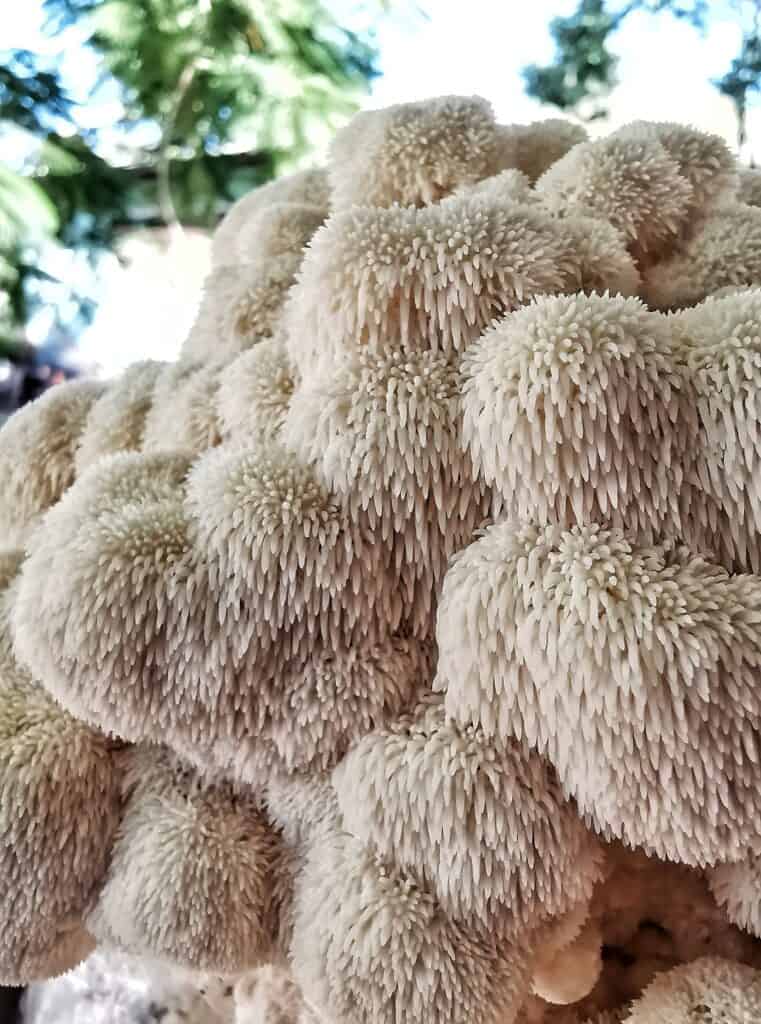
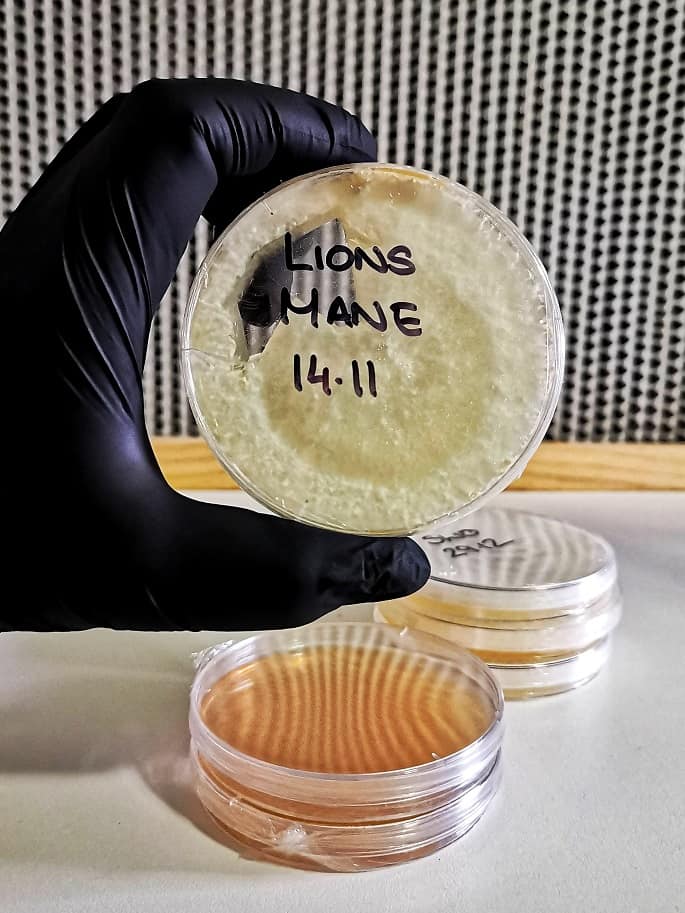
Try Cloning Mushrooms At Home
Learn how to create a mushroom culture at home from a fresh mushroom with our step by step video guide and tutorial.
Who We Are
I’m Luke and I’m mad about mushrooms. I operate a small scale family run business located 40 minutes west of Brisbane. We’re passionate about fungi and we look forwarding to sharing our experiences with you.
Frequently Asked Questions
Do you have questions for us? We might have answered your question in our Frequently Asked Questions.